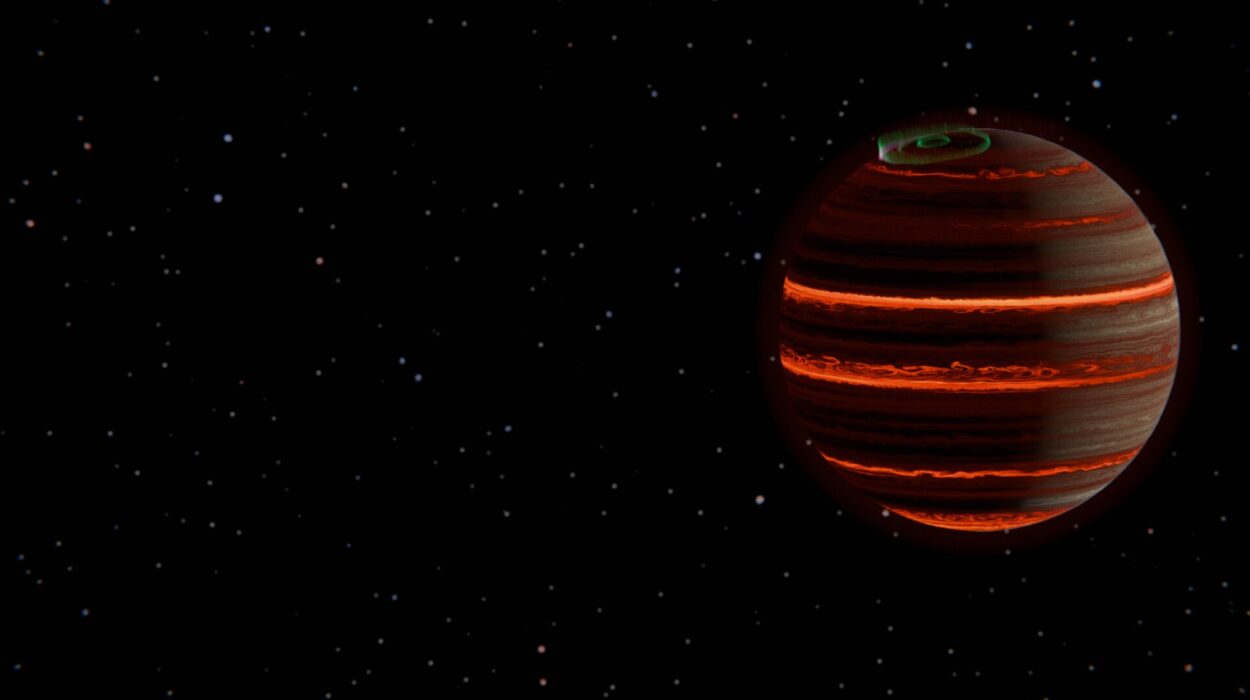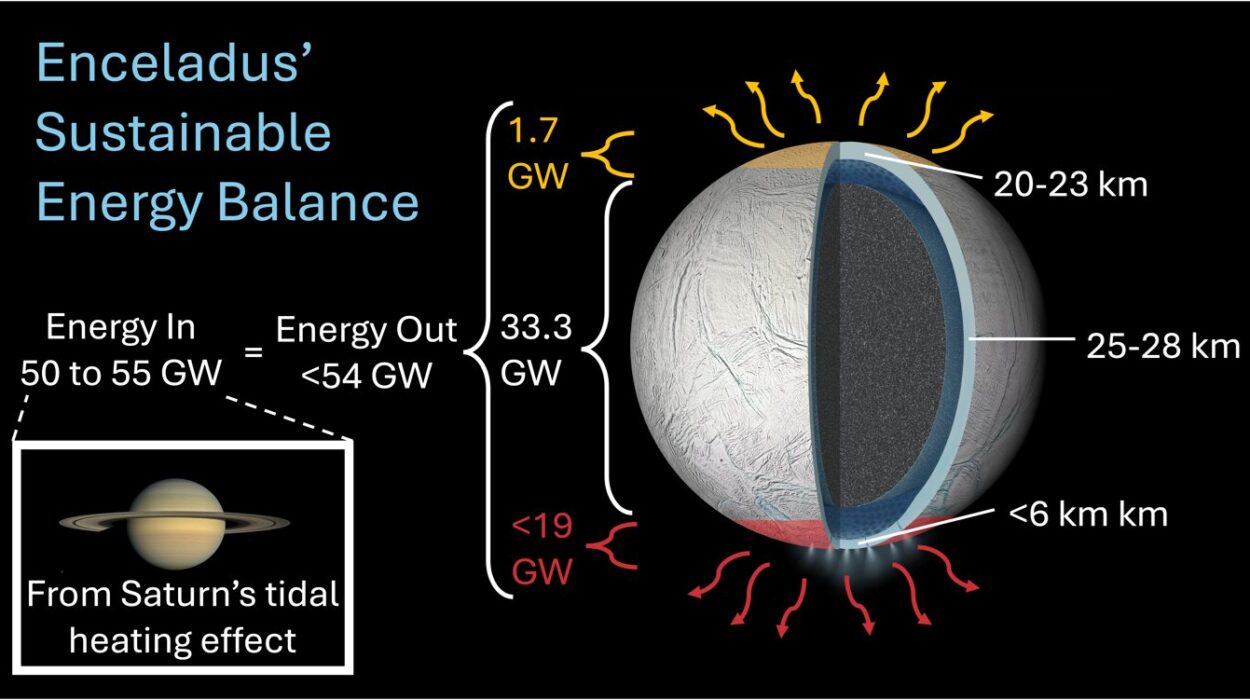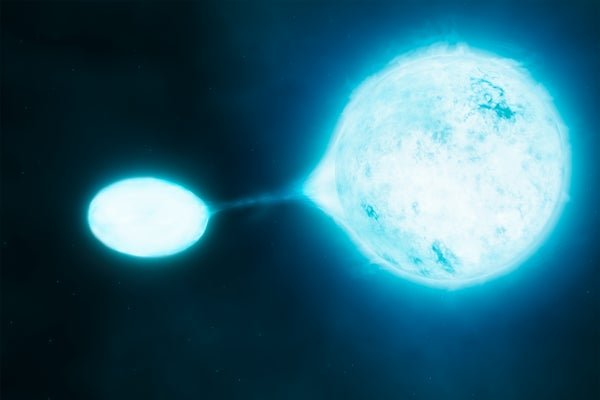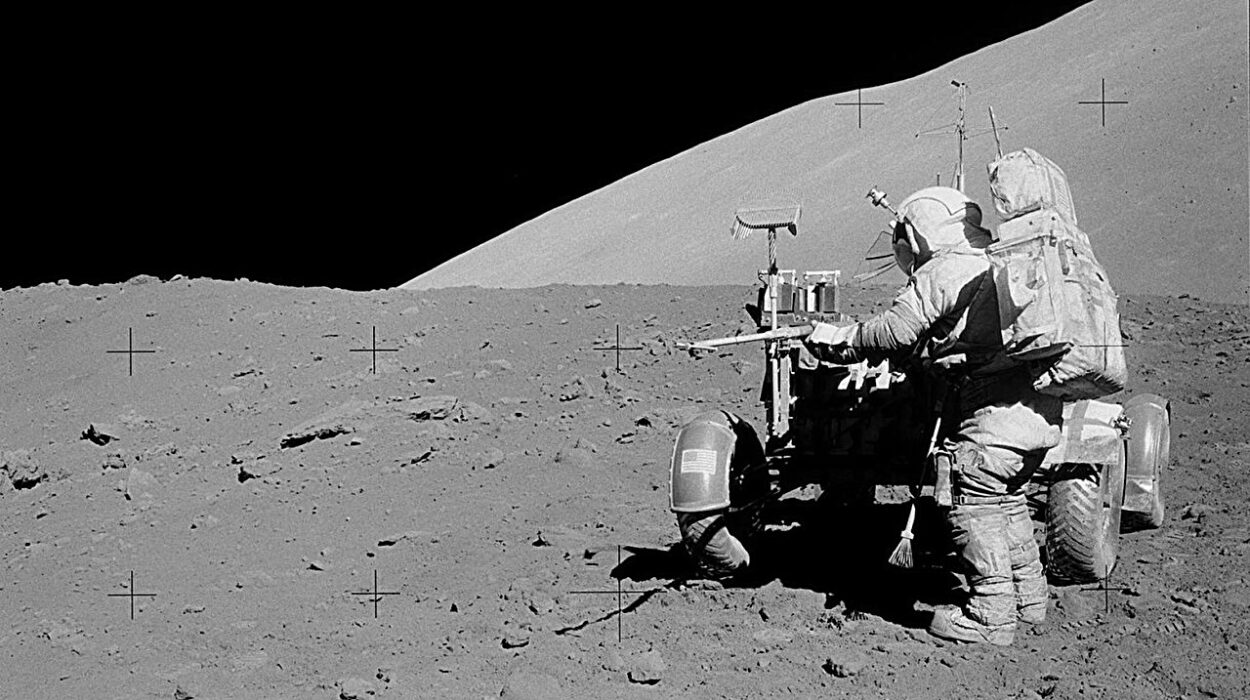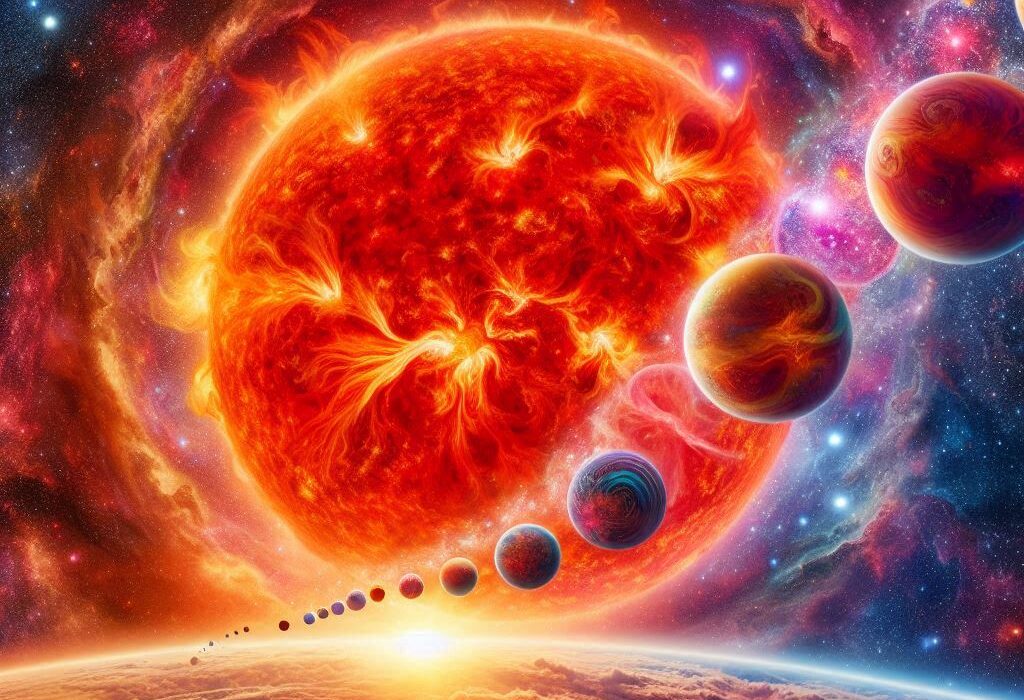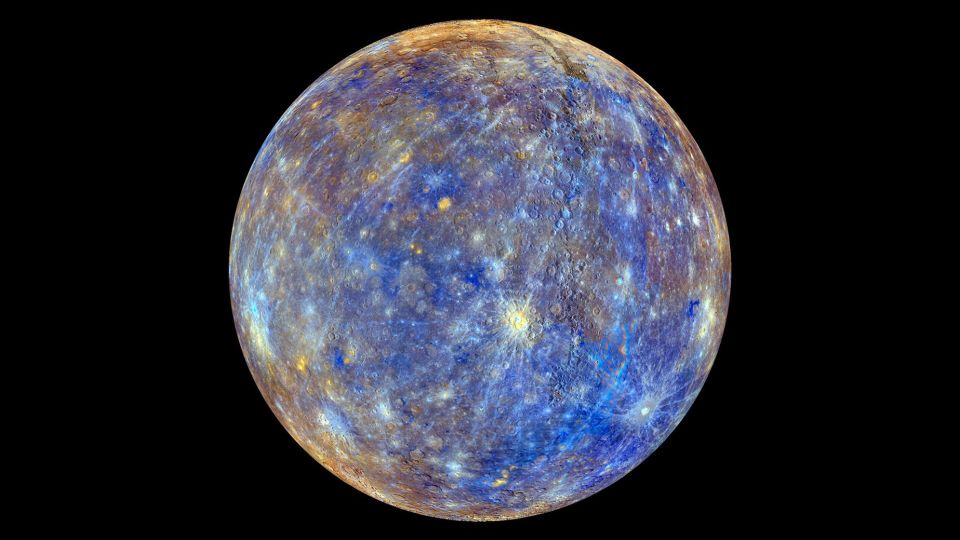Long before galaxies sparkled and planets circled their suns, the universe lay in deep darkness. For hundreds of millions of years after the Big Bang, space was a vast, cold expanse filled with invisible dark matter and diffuse gas. This era, known as the Dark Ages, began about 370,000 years after the Big Bang, when the universe cooled enough for light to travel freely — yet no stars existed to shine.
Astronomers have long wondered: What broke that darkness? What cosmic events gave rise to the very first stars — the elusive Population III stars — that ignited and transformed the universe forever?
Thanks to an unprecedented supercomputer simulation, scientists may finally have an answer.
The Challenge of Seeing the First Stars
Studying the early universe is like trying to watch the opening act of a play when you arrived halfway through. The James Webb Space Telescope (JWST) has given us astonishing images of the earliest galaxies, but directly observing the birth of individual stars more than 13 billion years ago is far beyond the reach of any telescope.
Instead, astronomers turn to powerful simulations — virtual universes run on supercomputers — to recreate the extreme conditions of the early cosmos. These models allow scientists to “rewind the clock,” simulating the growth of structure from the moment after the Big Bang to the formation of the first stars.
In a new study published in The Astrophysical Journal Letters, lead author Ke-Jung Chen of the Institute of Astronomy and Astrophysics at Academia Sinica in Taiwan and his colleagues have used one such simulation to uncover a surprising ingredient in the recipe for star birth: supersonic turbulence.
Building the First Star-Forming Cloud
The team began their simulation with a dark matter mini-halo — an invisible, gravitationally bound clump of dark matter with a mass about 10 million times that of the Sun. These mini-halos acted as the gravitational seeds for the first stars, drawing in surrounding gas.

The researchers used the GIZMO simulation code combined with data from the large-scale IllustrisTNG Project, one of the most sophisticated virtual models of cosmic evolution ever created. While IllustrisTNG can simulate the universe on scales of tens of millions of light-years, the team needed far finer detail — so they used a technique called particle splitting to increase the resolution by a factor of 100,000. This allowed them to see movements of gas on scales smaller than a single parsec — a feat never before achieved for this period in cosmic history.
What they saw was extraordinary.
Gas streamed into the mini-halo’s gravitational well at speeds five times faster than sound, colliding and swirling violently. This generated supersonic turbulence — chaotic, high-velocity eddies that fragmented the gas cloud into multiple dense clumps rather than allowing it to collapse smoothly into a single massive star.
A New Picture of Population III Stars
For decades, astronomers thought the first stars formed in isolation and were enormous — up to hundreds of times the Sun’s mass. Such stars would burn hot, die young, and explode in spectacular pair-instability supernovae, leaving behind distinct chemical fingerprints in the next generation of stars.
Yet despite decades of searching, astronomers have never found these fingerprints in the oldest stars we can observe. This mystery suggested something about our theories might be wrong.
The new simulations offer a solution: instead of forming as solitary giants, the first stars may have been more numerous and far less massive than previously believed. In the team’s model, one clump of gas was on track to form a star only about eight times the Sun’s mass — a far cry from the monstrous giants of earlier theories.
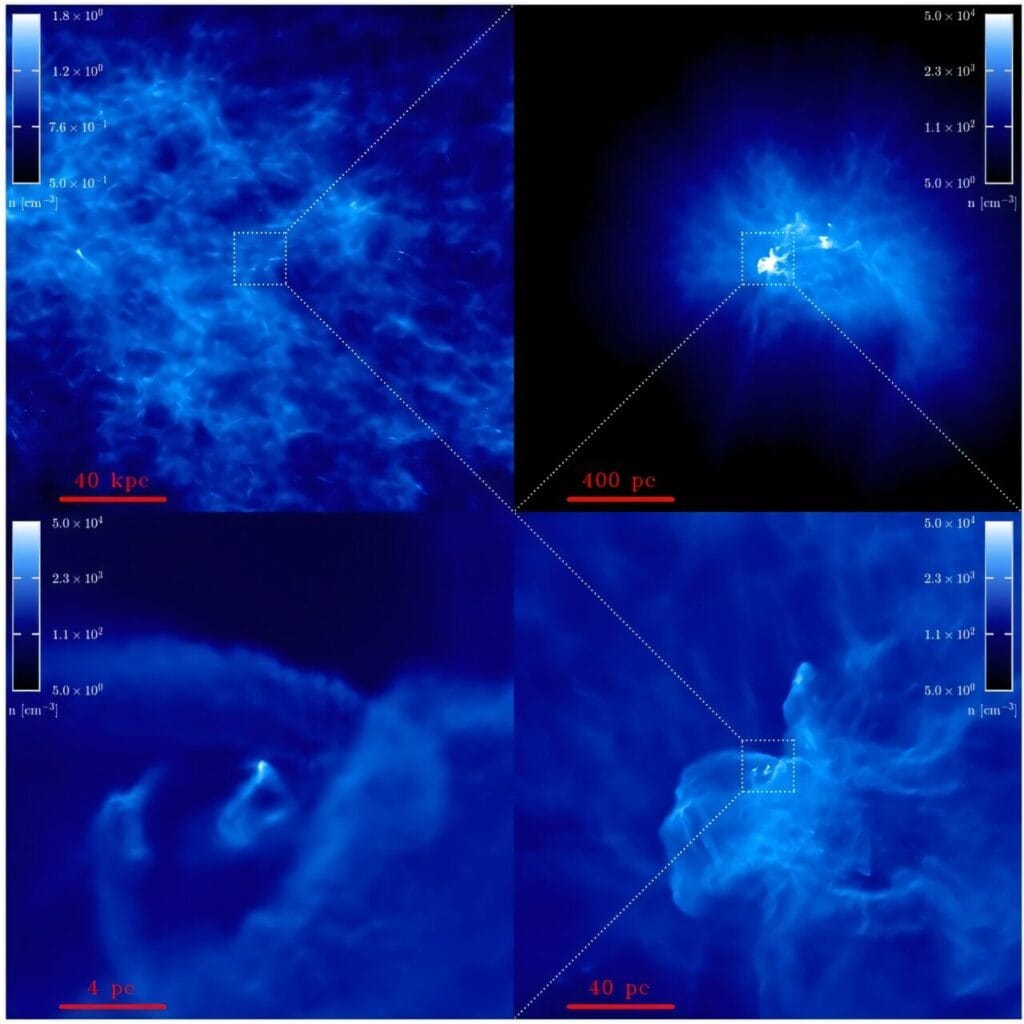
“Turbulence wasn’t just present — it was essential,” Chen explained in a press release. “It fractured the gas into multiple star-forming regions, preventing the runaway growth of extremely massive stars.”
Why This Matters for Cosmic History
If the first stars were smaller and less prone to exploding as rare, metal-enriching supernovae, it would explain why we haven’t seen their chemical “footprints” in ancient stars today. It would also mean that the cosmic dawn — the period when the first light flooded the universe — may have been shaped by a far larger population of moderate-mass stars rather than a handful of massive beacons.
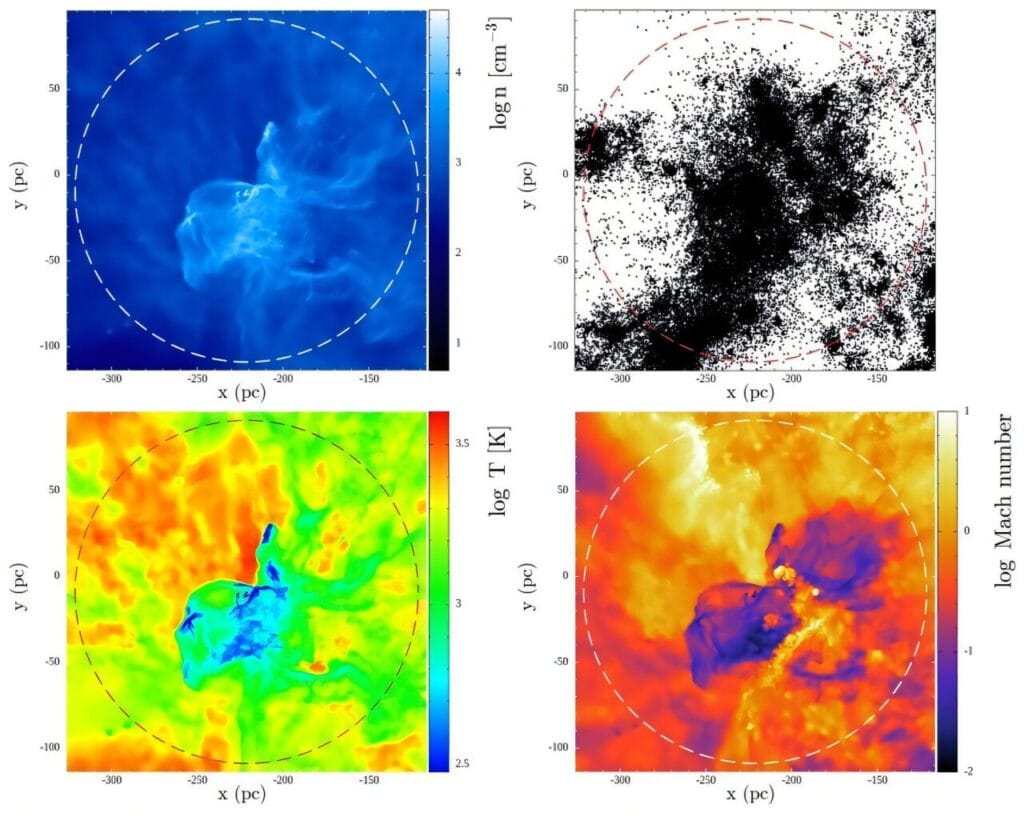
This insight has ripple effects across astrophysics. Smaller Population III stars would have lived longer, influencing the timing of galaxy formation and the reionization of the universe. They might also have left behind a different population of black holes than current models predict.
A Leap in Simulation Power
Beyond its scientific conclusions, the study is also a triumph of computational astrophysics. By combining large-scale cosmological data with microscopic modeling of gas chemistry and cooling, the researchers have built a bridge between the grand architecture of the universe and the small-scale physics of star birth.
“This simulation represents a leap forward in connecting large-scale cosmic structure formation with the microscopic processes that govern star birth,” said Chen. “By uncovering the role of turbulence, we’re one step closer to understanding how the cosmic dawn began.”
The Road Ahead
While no telescope can yet peer directly into the cradle of the first stars, simulations like this give astronomers a vital preview of what to expect — and what to look for in the light from the earliest galaxies. As JWST continues to push the observational frontier, and as simulations grow even more powerful, the universe’s first chapter is coming into sharper focus.
The Dark Ages may be long gone, but with every leap in our tools and understanding, we get closer to relighting their first sparks — the stars that began it all.
More information: Ke-Jung Chen et al, Formation of Supersonic Turbulence in the Primordial Star-forming Cloud, The Astrophysical Journal Letters (2025). DOI: 10.3847/2041-8213/adf18d

